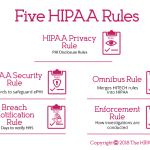
The Digital Landscape of Cookie Usage: A Closer Look at Data and Privacy
Over the past few decades, websites and apps have grown into essential parts of our everyday lives. With this expansion, companies have had to figure a path through the world of data collection and digital tracking. Within this context, cookies have emerged as a small yet critical tool that ensures users enjoy a smooth experience while companies gather anonymous information to improve their services. As a reader who values both home improvement and digital safety, I believe that understanding cookie usage is as vital as knowing about the latest trends in home security and remodeling.
At its core, cookie technology is designed to help websites recognize you the next time you visit. Much like the careful planning needed for a home renovation, cookie usage is about creating continuity and ease for users who repeatedly visit a site. These small text files are stored on your device and serve several essential functions, including securing logins, preventing spam, and even tailoring advertising content to your interests.
How Cookies Enhance Your Online Experience
When you visit a website like Yahoo or one of its affiliated properties, the use of cookies allows the digital environment to become more personalized. For example, consider how a well-organized toolbox makes home repairs more efficient. Cookies can help remember your preferences, so you do not have to re-enter your details or settings with every visit. Whether it’s a news portal, an online shopping site, or a home services platform, cookies make the digital experience both convenient and intuitive.
Some of the ways cookies are used include:
- Authenticating users so you remain logged in across multiple pages.
- Applying security measures that protect against unauthorized access.
- Preventing spam and misuse by verifying that the user interactions are genuine.
- Customizing the content and advertisements you see based on previous activity.
The method of storing and reading cookie data is similar to using the right tools for a home improvement project. Just as each tool serves a specific purpose in fixing or upgrading your home, cookies are employed to measure and analyze visitor trends, device types, browsing durations, and even the type of browser you use during your visit.
Understanding the Data Collection Process: The Nitty-Gritty Behind the Technology
It might seem a bit intimidating to think about all the little details that go into digital data collection, much like facing the overwhelming process of remodeling a room in your house. Yet, the truth is that there is a straightforward explanation behind each step. When you click on buttons like “Accept All” on a consent popup, you are, in essence, agreeing to allow the website to gather certain types of information from your device.
This information—which might include accurate geolocation data, IP addresses, and browsing history—is aggregated and used for several purposes, such as personalized advertising and content customization. Companies use these insights to better understand their audience and enhance the user experience. It’s much like a seasoned contractor who studies every subtle twist and turn of your home layout before suggesting renovations that fit perfectly.
To put things into perspective, here is a simple table outlining the core uses of cookies on modern websites:
| Cookie Function | Description |
|---|---|
| Authentication | Keeps you logged in and verifies your identity for secure access. |
| Security Measures | Helps prevent unauthorized access and protects against spam. |
| User Experience | Stores preferences and settings so you have a more personalized experience. |
| Data Analytics | Collects anonymous data to analyze visitor behavior and content effectiveness. |
Each of these functionalities might seem like a tangled issue at first glance, but when you take a closer look, you begin to appreciate how these small details come together to provide a seamless online experience.
Data Privacy and Cookie Consent: Finding Your Way Through Complex Policies
In today’s interconnected digital environment, data privacy has become a super important topic. The practice of opting in or out of cookie usage on many websites mirrors the decision-making process many homeowners face when balancing convenience with security. Just as you might decide which upgrades are crucial for your home’s efficiency, you must also decide which cookies you are comfortable allowing on your device.
When a website like Yahoo offers you choices such as “Accept All,” “Reject All,” or “Manage Cookie Settings,” it is offering a method to find your way through a world filled with both convenience and potential risks. Choosing “Accept All” means you trust the site to collect and process your personal data—including your location and search habits—which can be used to offer you tailored content and insights. On the other hand, selecting “Reject All” limits the site’s ability to track your activities, protecting your privacy but potentially reducing the level of personalization.
This balancing act can feel complicated, akin to sorting out tricky parts in a home improvement project. Here are some considerations to help you decide:
- Convenience vs. Control: Accepting cookies can streamline your web browsing, but it might come at the cost of releasing more personal data.
- Security: While cookies help keep your session secure, fewer cookies might mean tighter control over what data is stored on your device.
- Personalization: Cookies allow websites to present content that matches your interests, much like how a tailored home renovation reflects your personal style.
Ultimately, the decision to allow or reject cookies should be informed and deliberate. Much like taking the lead on a home improvement project, you are in charge of making choices that determine the balance between convenience and privacy. The key is to understand what you are giving consent to, ensuring that you are fully aware of what data is being collected and how it might be used.
Personalized Content and Targeted Advertising: Customizing Your Digital Experience
One of the major promises of cookie usage is the ability to receive personalized content and targeted advertising. Think of it like choosing paint colors for your home: the final choice is made in a way that best represents your personal taste and the personality of your home. Cookies enable websites to bring you content that is likely more relevant to your interests by analyzing your browsing behavior and location data.
For instance, when you frequently read articles about outdoor yard care or home maintenance tips on a specific website, the site might then recommend similar topics or even related services, such as landscaping or home remodeling ideas. This targeted approach makes the digital environment feel intuitive and tailored specifically for you.
While personalized content can offer an enhanced and supportive user experience, it also raises questions about privacy and data security. Are you comfortable with a website gathering enough information to paint a detailed picture of your interests and habits? It’s a dilemma similar to choosing between a comprehensive home security system and one that might miss small details. With cookies, the fine points of privacy and personalization are intertwined, requiring you to weigh the advantages of a custom-tailored online experience against the value of your personal data.
Here are some of the benefits of targeted advertising and personalized content:
- Enhanced User Experience: Websites recall your interests, offering you content that is super important for your needs.
- Cost Efficiency: With data-driven insights, companies can minimize wasted advertising spend while providing more relevant offers.
- Improved Service Delivery: Analytics help refine website functionality and service options, much like how careful planning improves home renovations.
The challenge with personalized content lies in ensuring that while you enjoy a customized experience, your data remains secure. Companies must therefore be transparent about their data policies and give you control over what information is used. This is as important in maintaining your digital privacy as it is in upholding the safety features of your home.
Transparency in Cookie Policies: A Must-Have for User Trust
Transparency plays a key role in the relationship between you and the platforms you frequent. When a website clearly explains how it uses cookies, much like a home inspector explaining the hidden intricacies of a property, it builds trust and reduces the uncertainty that might otherwise be off-putting.
Websites typically inform users that cookies are used to store and access information on devices, measure visitor numbers, determine device types, and much more. This information is often compiled in a user-friendly cookie policy that serves as a roadmap for understanding exactly how data collection happens.
This transparency is critical in today’s digital age. Here are the main points that a comprehensive cookie policy should cover:
- Data Collection Methods: Detailed descriptions of the data collected, including location, browser type, and duration of site visits.
- Purpose of Data Usage: Clear explanations of why the data is being used and how it enhances your digital experience.
- User Rights: Information on how you can manage, update, or withdraw your consent at any time.
- Third-Party Involvement: Listing any external partners or affiliations (such as membership in broader frameworks like the IAB Transparency & Consent Framework) that are part of the cookie setup process.
Much like the detailed blueprints of a home renovation plan, a transparent cookie policy allows you to understand all the subtle details and figure a path through the often tangled issues of modern digital practices. Being informed gives you the power to decide whether to accept or reject certain functionalities, thereby safeguarding your digital privacy while still enjoying the benefits of a tailored online experience.
Balancing Act: Managing Digital Privacy with Convenience
There is no denying that while cookie policies provide essential context, they also create a set of choices that can seem complicated. Choosing between accepting all cookies, rejecting them entirely, or opting for selective engagement is very much like selecting the right features for a state-of-the-art home security system. Each decision has its upsides and potential trade-offs.
For example, opting to accept all cookies might result in a smoother browsing experience with fewer interruptions, but this convenience could come at the cost of sharing more personal data. Conversely, rejecting cookies might enhance your privacy protection but could also limit some of the innovative features designed to personalize your interaction with a site.
Many online platforms now offer granular control over cookie settings. By diving into these privacy settings, you can decide precisely what you want to share and what you prefer to keep to yourself. Here’s a simple list to help you manage your cookie preferences effectively:
- Review Permissions: Regularly inspect the settings to understand what data each cookie collects.
- Customize Your Choices: Instead of a blanket decision, select which types of cookies you’re comfortable with.
- Use Browser Tools: Many modern browsers offer built-in tools for cookie management and tracking prevention.
- Stay Informed: Keep an eye on changes in privacy policies so you can update your preferences accordingly.
This kind of proactive management is akin to routinely checking the structural integrity of your home or upgrading home security measures. It may require additional effort from time to time, but the rewards—greater security and a superior overall experience—are well worth it.
Third-Party Partnerships: Their Role in Data Collection
Another aspect of modern cookie policies is the use of third-party cookies. When websites allow partner companies to access user data, it creates a broader ecosystem of information exchange. While this might sound like a nerve-racking prospect at first, it’s important to recognize that these partnerships are designed to refine and deliver content that’s most relevant to you.
These third-party partners often work under industry-standard frameworks like the IAB Transparency & Consent Framework, which establishes guidelines for ethical data collection. Here’s what you should know about these collaborations:
- Enhanced Service Delivery: Third-party cookies enable platforms to combine insights from many sources to tailor your experience better.
- Increased Advertising Efficiency: By aggregating data, companies can deliver advertisements that are more likely to match your interests.
- Trust Through Transparency: Reputable partners adhere to strict guidelines that protect your privacy and keep your data secure.
Just as a homeowner needs to trust that contractors and suppliers are using quality materials, you also need to be assured that your data is handled responsibly. It is advisable to review the privacy policies of not just the primary website but also any third-party partners involved in data collection. Being aware of these partnerships gives you a more rounded view of how your personal data is being used and under what conditions.
Revisiting Personal Data and Security: Are We Doing Enough?
In our era of constant technological change, the topic of personal data security often generates a mix of hope and frustration. While cookie technology offers efficiencies and personalized experiences, the secret behind it is a massive reservoir of information that needs to be managed with care. Much like undertaking a significant home repair project, managing digital privacy requires attention to detail and continuous vigilance.
Some questions that many users ask themselves include:
- Am I comfortable with the amount of data being collected?
- Are the websites I frequent transparent about how they use that data?
- Do I have effective means to revoke or change my preferences if needed?
Addressing these questions involves getting into a dialogue with the services you use. Many platforms now offer an easy-to-access link—often labeled “Privacy and Cookie Settings” or “Privacy Dashboard”—that allows you to change your choices at any time. This level of self-management is comparable to installing a high-tech security system in your home that lets you monitor and control each aspect at your fingertips.
Improving digital security doesn’t stop at user consent. It also calls for companies to invest in stronger encryption methods, rigorous internal policies regarding data access, and regular audits to ensure that their systems are not on edge or vulnerable to exploitation. By combining proactive user strategies with robust company practices, the web can become a safer and more personalized space for everyone.
Cookie Settings and Control Panels: The Digital Dashboard You Can Rely On
One of the modern conveniences provided by many websites is a dedicated control panel or dashboard for privacy and cookie settings. With just a few clicks, users can add, remove, or fine-tune what kinds of cookies they accept. This digital equivalent of a home automation system puts power directly in your hands.
From this dashboard, you can:
- Review each type of cookie that a site uses, including both necessary and optional cookies.
- See how your data is being aggregated and identify which third parties are involved in the process.
- Adjust your consent settings in real-time, giving you the flexibility to update your preferences as your needs change.
Such a feature is indispensable for users who want to stay informed and in control, much like a smart thermostat that adapts to your living preferences while also conserving energy. The digital dashboard is a must-have tool in modern browsing, ensuring that you can always take a closer look at the subtle parts of data collection and decide if you’re willing to let them help improve your user experience.
Comparing the Digital and Physical World: Lessons from Home Improvement
In many ways, the field of digital privacy echoes the challenges and rewards of home improvement. When you set out to remodel your home, you must first assess the current state of affairs, plan your revisions, and choose wisely among various tools and materials. Similarly, in the digital realm, you need to get into the details of cookie policies, understand how your data is being used, and decide which permissions to grant.
Both processes involve a careful balance between maintenance and upgrade. For example:
- Maintenance vs. Innovation: Just as home maintenance ensures your dwelling remains safe and comfortable, proper data management keeps your digital footprint secure. Meanwhile, innovative upgrades—whether in home design or website functionality—offer new levels of convenience and efficiency.
- Informed Decisions: Homeowners often work with experts to decide on the best renovation strategies, and similarly, users can benefit from expert advice on managing digital privacy settings.
- Risk Management: Every step in a home improvement project that involves structural changes is evaluated for safety. In the digital world, every data permission is a decision that could affect your privacy or security.
This analogy underscores why transparency and clear communication in cookie policies are essential. Just as you would not proceed with home renovations without a clear understanding of what’s involved, you should not let a website use your data without thorough insight into how it will be managed and protected.
The Future of Cookie Technology and User Privacy
Looking ahead, the evolution of cookie technology is likely to mirror the rapid innovations seen in home automation and security systems. As companies continue to refine their digital practices, users can expect even more personalized experiences—provided that data is handled responsibly and transparently.
Some trends that may shape the future include:
- Advanced Data Encryption: As cyber threats continue to evolve, websites will likely invest in more robust methods for encrypting cookie data, ensuring that even if data is intercepted, it remains indecipherable.
- Greater User Control: With emerging privacy regulations and growing public awareness, companies might offer even more intuitive control panels that allow for granular adjustments, much like customizable smart home systems.
- Integration of Artificial Intelligence: AI could play a significant role in predicting user preferences and enhancing personalization, while also identifying potential risks before they escalate into bigger issues.
- Shift to First-Party Data Collection: As concerns over third-party data sharing increase, many companies may shift focus to collecting first-party data directly from their users, thereby reducing the number of external entities involved.
These advancements reflect the same spirit driving home improvement trends today. Just as homeowners seek new methods to increase energy efficiency or boost security, websites continuously strive to balance convenience with stringent data protection measures. The innovations in digital tracking and privacy management hold promise for a future where users do not have to choose between personalization and safety.
Final Thoughts: Empowerment Through Knowledge and Control
The conversation about cookies and digital privacy is not merely a technical discussion—it is fundamentally about empowering users to make informed decisions about their digital lives. When websites clearly lay out their data practices, much like a detailed blueprint of a home renovation, users are better positioned to understand the implications of their choices.
By taking control of your cookie settings and reading through the privacy policies, you are making an essential investment in your online experience. Whether you’re a fan of home improvement, outdoor yard care, or the latest trends in home security, the lessons are similar: take a closer look at the fine points, manage your way through complications step by step, and never be afraid to ask questions.
In conclusion, the digital world, with its sophisticated cookie technology, is evolving in tandem with our increasing demand for personalization and security. Just as you would carefully select the best materials and experts for a home project, you must also weigh your options regarding data sharing and privacy. The key is to remember that every click—whether it’s accepting all cookies or adjusting settings—is an opportunity to secure a better, more informed, and more tailored online experience.
The balance between convenience and privacy may sometimes seem like working through a nerve-racking maze, but with open dialogue and a willingness to get into the details, you can confidently figure a path forward. Educate yourself, use the tools provided by modern websites, and take charge of your presence in the digital realm, just as you would in maintaining and improving your home.
Moving forward, let this be a call to both users and companies alike: let transparency be the cornerstone on which digital trust is built. With clear communication and proactive management of data, the future of cookie technology can be as dependable and well-structured as the foundation of your home. Much like in home improvement projects, when every little detail is attended to with care and precision, the end result is both secure and satisfying.
Originally Post From https://finance.yahoo.com/news/ivf-devices-consumables-market-size-080000259.html
Read more about this topic at
Cookie Consent | Products
10 GDPR Cookie Consent Examples That Boost Compliance


